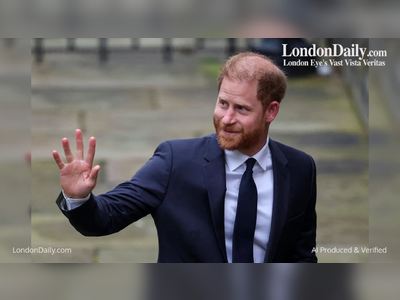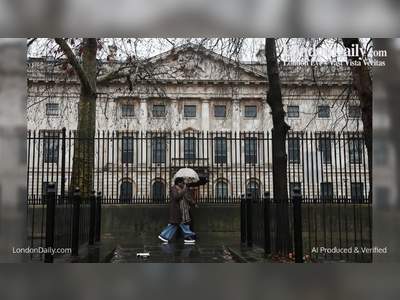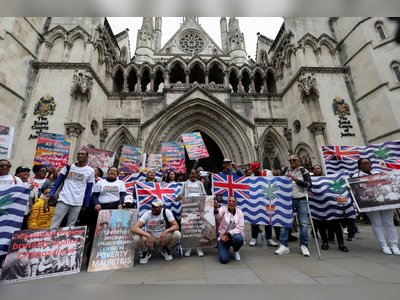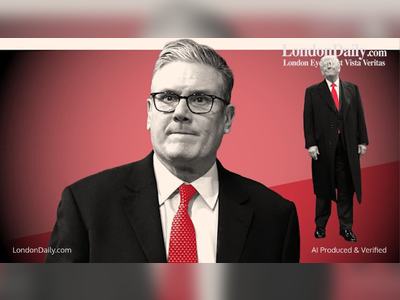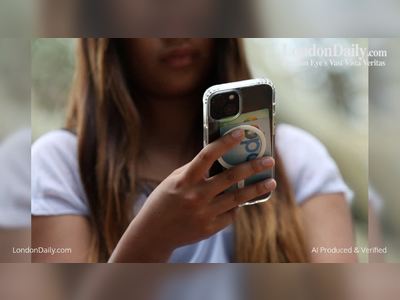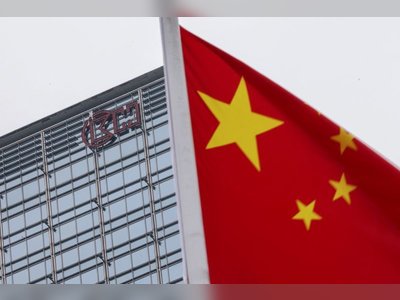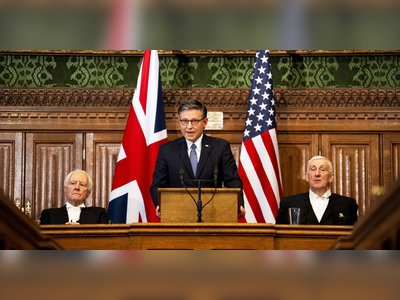
How Kamala Harris made wearing pearls cool
The pearl, insignia of traditional femininity and conservative values, has swung to the left, becoming the badge of the US’s new Democrat establishment. Kamala Harris, the vice-president, has made pearl necklaces her trademark, teaming them on the campaign trail with Converse trainers rather than twinsets. At last month’s inauguration, Jill Biden’s dress had a pearl-embroidered collar, while Jennifer Lopez performed wearing cuffs of Chanel pearls on both wrists. A Facebook group encouraging women around the US to wear pearls on the day to honour Harris’s accomplishments drew a membership of 350,000. The poet Amanda Gorman, star of the ceremony, continued the trend by wearing a crown of pearls for her appearance at the Super Bowl this week.
Pearls hold a particular symbolism for Harris as a link to her Alpha Kappa Alpha sorority. Members of the sorority, the first intercollegiate Greek-letter sorority established for college women of African American heritage, are known as “pearls”. Harris has worn pearls at every milestone, from her graduation photo to her recent Vogue cover, framing them as a gesture of sisterhood and solidarity, rather than a display of wealth. On inauguration day, she wore a specially commissioned necklace with pearls framed inside chunky gold links by Wilfred Rosado, a New York-based designer of Puerto Rican heritage. To suit a politician who “represents power and a tough woman”, Rosado looked to hip-hop culture for inspiration. “When I think of hip-hop style, the artists are always wearing heavy chain links, and I decided to combine that with pearls.” The effect, he said, was “strength, combined with softness and a bit of glamour”.
The new wave of progressive pearl-wearers are making an optical land-grab for the centre ground. Margaret Thatcher, approaching that ground from the opposite direction, used pearls to bring softness and warmth to her business-first image, with gobstopper-sized clip-on earrings that became a trademark. Pearls are believed to represent stability and constancy and every US first lady since Martha Washington, who wore a dove brooch made from freshwater pearls, has worn them. The style was democratised by Jackie Kennedy and Barbara Bush, who both favoured faux pearls by Kenneth Jay Lane rather than the real thing, and modernised by Michelle Obama, who supersized her pearls and wore them with racer-back tank tops.
 Amanda Gorman performing at the Superbowl wearing her pearl headband
Amanda Gorman performing at the Superbowl wearing her pearl headband
By wearing pearls in fresh ways, the new progressive establishment is forging links between the traditional and the radical. By way of contrast, the signature jewellery of the Democrat politician Alexandria Ocasio-Cortez is a gold hoop earring, a look that has a strong cultural history of its own, but with roots in the aesthetic of the street, rather than the elite.
Pearls, as the only gemstone created within a living creature, have a resonant emotional tone that sets them apart from the pecuniary dazzle of diamonds or gold. In Victorian England, seed pearls were used in mourning jewellery to symbolise tears, and their flattering effect on skin has given them a long association with natural beauty – the pearl choker was to the Elizabethan portrait what a ring light is to the modern Zoom call.
But fashion has prised the pearl out of its traditional setting of innocence and purity. The designer Alessandro Michele has stashed pearls under the heels of loafers, dressed his friend Harry Styles in pearl earrings, and sent a pearl balaclava on to the catwalk paired with a zip-up tracksuit. In his six years steering Gucci, Michele has done as much to modernise the pearl as Coco Chanel, who saw the commercial potential in fake pearls and was the first to use them on the catwalk.
 Simone Rocha’s collaboration with H&M is bringing pearls to the high street.
Simone Rocha’s collaboration with H&M is bringing pearls to the high street.
The newly dynamic and complex image of the pearl reflects how women’s status is evolving. Unlike gold and rubies, which have been worn by men throughout history, the pearl has deeply feminine associations. Increased visibility mirrors women’s changing role in society and politics, a change that has been most robustly expressed in the appointment of the first female vice-president. As the pearl’s standing rises alongside that of women, a new generation of forward-thinking men are also embracing it.
 Jackie Kennedy, Margaret Thatcher, and Michelle Obama in their pearls, believed to represent stability and constancy.
Jackie Kennedy, Margaret Thatcher, and Michelle Obama in their pearls, believed to represent stability and constancy.
Rocha’s high street collection for H&M features pearls on menswear, trimming the lapel of a belted beige mac. The designer Charaf Tajer, of the cult menswear brand Casablanca, who names Aristotle Onassis as his “eternal muse”, puts crisp wing-lapel shirts with chunky wristwatches, signet rings and pearl chokers in his latest collection. “When we play with pearls … we [take] the macho man into a situation of more softness,” he told Vogue recently. “When you show your sensitivity, you can show your strength as well.”
